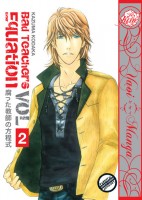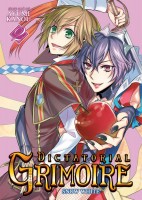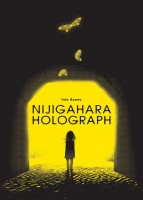 In 2010, around the same time that I started writing at Experiments in Manga, another blog also came into existence, Organization Anti-Social Genuises (OASG). Originally co-founded by Justin Stroman (the current Editor-in-Chief of OASG and an occasional guest writer at Manga Bookshelf) and the now retired LCMoran, the site is currently a team effort with a group of writers (mostly from the United States and France) working on features, articles, interviews, and reviews of Japanese pop culture, including manga, anime, video games, and more.
In 2010, around the same time that I started writing at Experiments in Manga, another blog also came into existence, Organization Anti-Social Genuises (OASG). Originally co-founded by Justin Stroman (the current Editor-in-Chief of OASG and an occasional guest writer at Manga Bookshelf) and the now retired LCMoran, the site is currently a team effort with a group of writers (mostly from the United States and France) working on features, articles, interviews, and reviews of Japanese pop culture, including manga, anime, video games, and more.
The site’s associated Twitter account, OrganizationASG sums it up pretty nicely: “We’re anti-social geniuses that try and highlight those people behind the scenes in anime and manga.” I’ve more or less been following OSAG since its beginning, so why am I making a point of featuring it now? I’ve always enjoyed OSAG, and it did a fantastic job hosting the Naoki Urasawa Manga Moveable Feast back in February 2013, but recently I’ve been particularly impressed by the manga-related content that the team has been posting.
I’ve already repeatedly mentioned hat OASG is a team effort. So, who exactly is writing about manga at OASG? Justin does a ton of writing for OASG in general and is also one of the site’s most prolific manga writers. He conducts interviews, reviews manga, and writes many of the manga articles. Maggie has earned her title of manga reviewer while Manjiorin (who also has her own blog, Manga Connection, which I quite enjoy) is another of the site’s primary manga columnists. Naru mostly writes anime reviews at OASG, but she also posts manga reviews from time to time. As for past writers, LCMoran wrote some manga-related content and from 2011 to 2013 Sweetpea had the more or less weekly manga column Bookmarked.
When it comes to manga, OASG is largely divided into two main categories. There are the Manga Articles and there are the Manga Reviews, which can also be browsed by demographic: Shounen, Shoujo, Seinen, and Josei. (Sadly, there’s no index to the reviews. An excellent index has been added!) However, those categories aren’t the only places to find manga-related material on OASG. One of the other places where manga content regularly shows up is in the site’s section for Interviews. Justin talks with all sorts of people from the manga industry: translators, letters, editors, publishers, critics, bloggers, and so on. OASG also maintains a list of the year’s US manga releases organized by release date and publisher. The list specifically focuses on the six major manga publishers in the United States: Digital Manga, Kodansha Comics, Seven Seas, Vertical, Viz Media, and Yen Press. Explore OASG further and manga content can be found all over the place.
As much as I enjoy the manga reviews at OASG, my favorite posts tend to be the manga-related interviews, columns, and articles simply because I don’t know of many other sites that feature that type of content. OASG’s Resources page collects links to some of the site’s most helpful posts, including plenty of manga-oriented material. Occasionally, OASG will have an ongoing series of manga articles, as well. For example, Justin just very recently launched The Manga Artists Who Stopped By and Left Forever which I’m looking forward to a great deal.
So that was the long of it. The short of it? Organization Anti-Social Geniuses is a great site for manga-related content, some of it not found anywhere else, and you should really consider checking it out.






